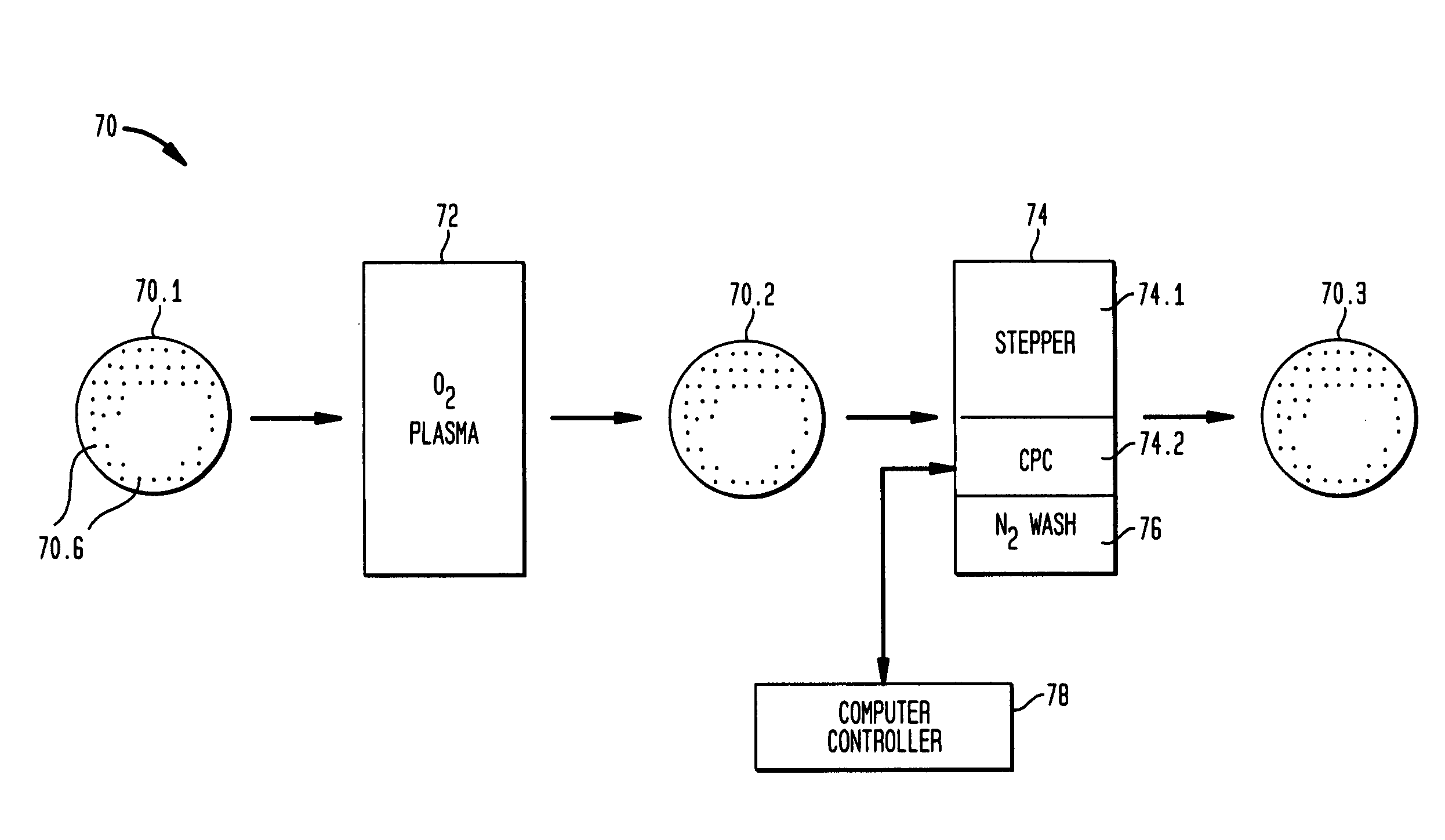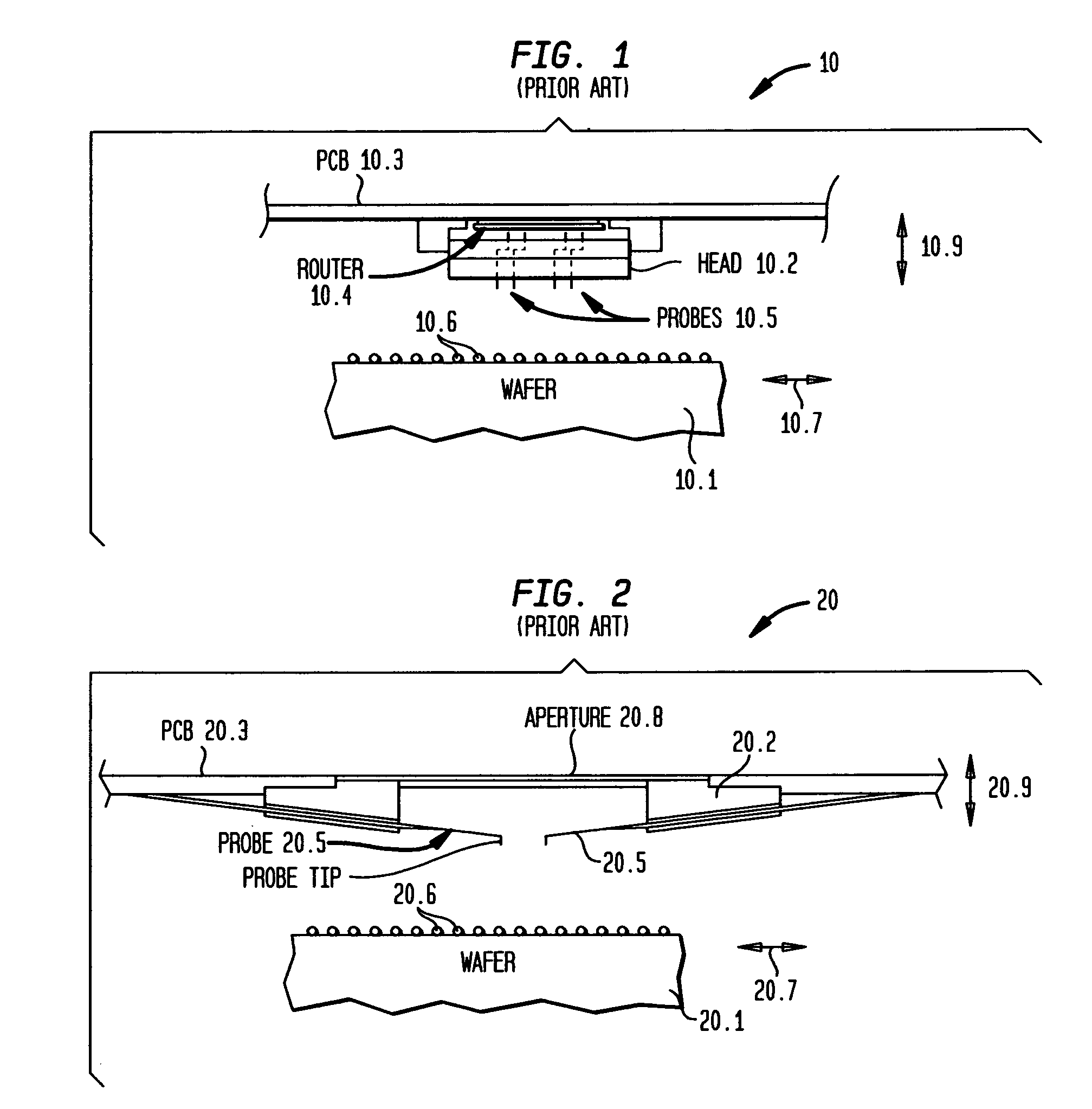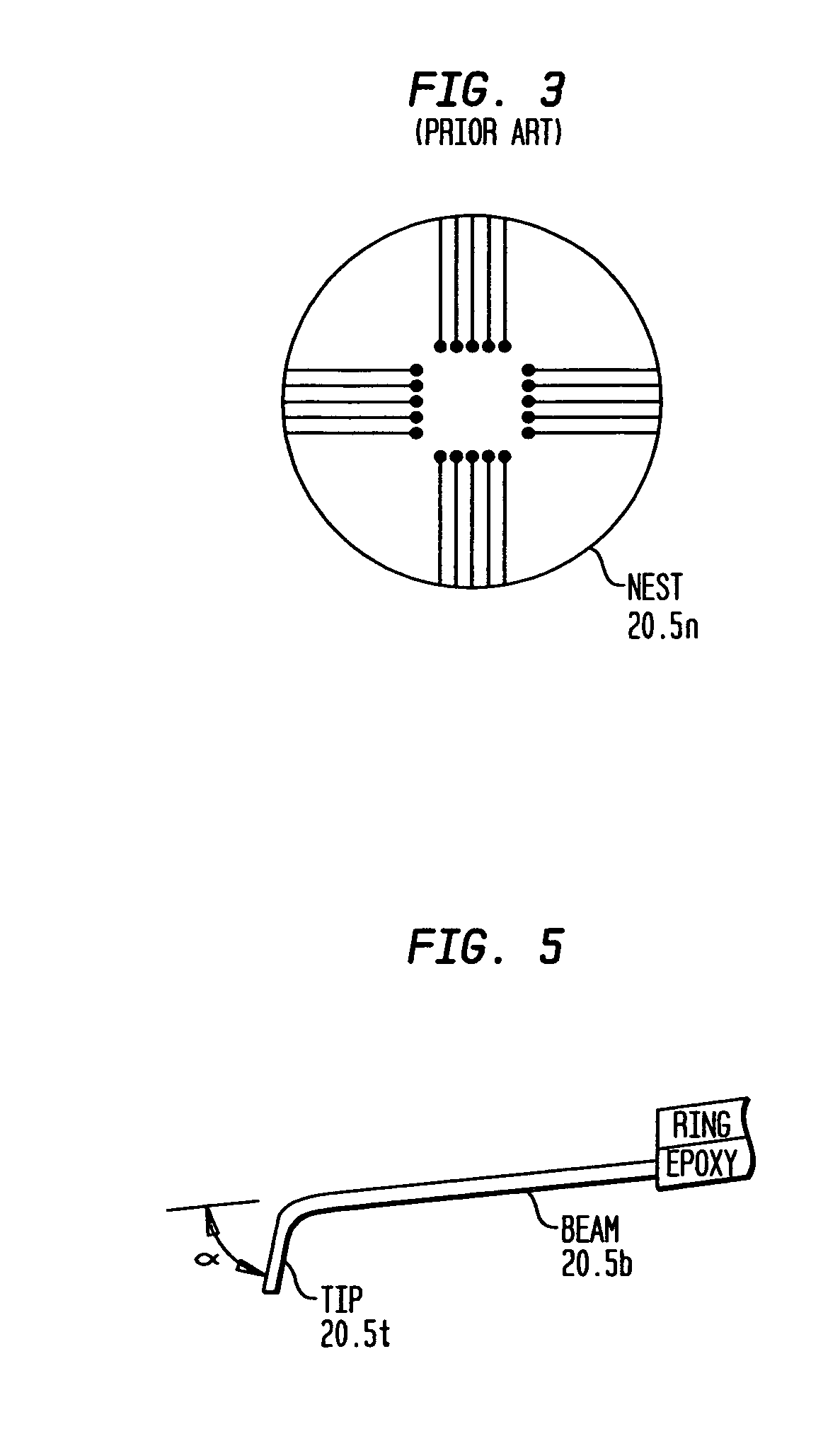Method of testing electronic wafers having lead-free solder contacts
a technology of electronic wafers and solder contacts, applied in electrical testing, measurement devices, instruments, etc., can solve the problems of affecting the quality of electronic wafers, and requiring complex fabrication techniques, etc., to reduce the variability of contact resistance, eliminate the sliding movement of the probe tip, and reduce the contact resistance
- Summary
- Abstract
- Description
- Claims
- Application Information
AI Technical Summary
Benefits of technology
Problems solved by technology
Method used
Image
Examples
example
[0026]This example describes a method of testing electronic eight-inch wafers having lead-free, solder bumps, in accordance with one embodiment of our invention. Each wafer contained about 2500 integrated circuits (dies) that performed pre-amplifier functions. Various materials, dimensions and operating conditions are provided by way of illustration only and, unless otherwise expressly stated, are not intended to limit the scope of the invention.
[0027]More specifically, the electronic wafers had metal solder bumps comprising a 95% Sn-3.5% Ag-1.5% Cu alloy. The wafers were maintained at about 25° C. and were oxidized in a commercially available plasma reactor under the following conditions:
[0028]
RF power475 WattsVacuum138 mTorrO2 flow rate80 cc / mm @ 5–10 psiPlasma modeDownstreamTime≧1 min
[0029]To demonstrate the effect of the plasma process we turn to FIGS. 6–7, which are Auger depth profiles of the wafer before (FIG. 6) and after (FIG. 7) it had been subjected to the oxygen plasma. ...
PUM
 Login to View More
Login to View More Abstract
Description
Claims
Application Information
 Login to View More
Login to View More - R&D
- Intellectual Property
- Life Sciences
- Materials
- Tech Scout
- Unparalleled Data Quality
- Higher Quality Content
- 60% Fewer Hallucinations
Browse by: Latest US Patents, China's latest patents, Technical Efficacy Thesaurus, Application Domain, Technology Topic, Popular Technical Reports.
© 2025 PatSnap. All rights reserved.Legal|Privacy policy|Modern Slavery Act Transparency Statement|Sitemap|About US| Contact US: help@patsnap.com



